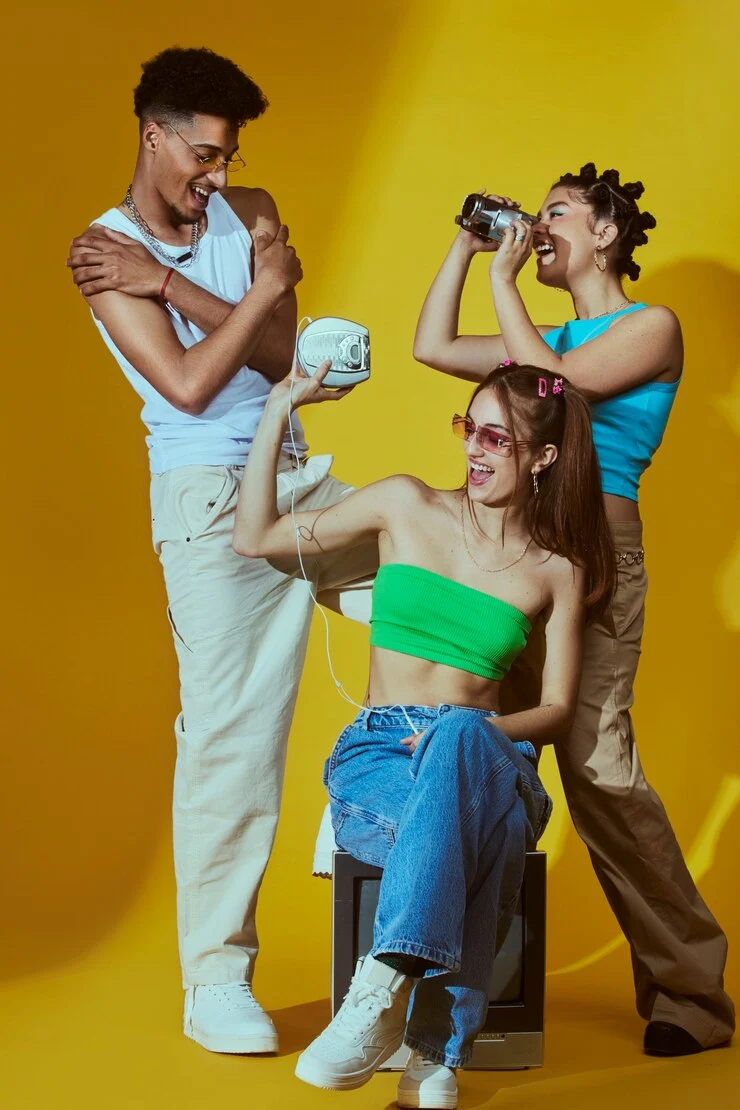The 1970s was a decade marked by radical changes in society, music, and fashion. Among these transformations, punk fashion emerged as a powerful statement of rebellion and individuality. Rooted in the DIY ethos and characterized by its raw, unpolished aesthetics, 70s punk fashion continues to inspire and influence the world today.
The Birth of Punk Fashion
Punk fashion wasn’t about following trends—it was about breaking them. This movement was a stark contrast to the flower-power aesthetic of the 60s, aiming to disrupt the mainstream with its gritty, confrontational style. Malcolm McLaren, the manager of the Sex Pistols, aptly captured this sentiment: “Clothes create a kind of visual shorthand… Punk clothing was about saying no to hippy idealism”.
The streets of London, particularly around King’s Road, became the birthplace of punk fashion. Vivienne Westwood, a pioneering designer of the movement, opened her iconic shop, SEX, with McLaren. Westwood’s designs were provocative and rebellious, incorporating elements like safety pins, ripped fabrics, and bold slogans. Reflecting on the essence of punk, she said, “Punk was never about fashion—it was about freedom… You wore clothes that would shock your parents”.
Key Elements of 70s Punk Fashion
DIY Ethos
One of the most defining aspects of 70s punk fashion was its DIY (Do-It-Yourself) spirit. Punk enthusiasts often customized their clothing to express their individuality and disdain for mass-produced fashion. Judy Blame, a notable stylist, emphasized this by saying, “Punk wasn’t about labels or brands… It was about safety pins and ripped clothing”. This approach made punk fashion accessible to everyone, regardless of socioeconomic status.
Ripped and Distressed Clothing
Punk fashion embraced imperfection. Ripped jeans, tattered shirts, and frayed edges were not only accepted but celebrated. This style was a direct rejection of the polished and pristine looks that dominated mainstream fashion. These intentionally distressed garments were often adorned with patches and slogans that conveyed anti-establishment messages.
Leather and Metal
Leather jackets, often embellished with metal studs and spikes, became a staple in punk wardrobes. These items were more than just fashion statements—they were symbols of toughness and defiance. The leather jacket, in particular, became synonymous with punk rockers, embodying the gritty edge of the movement.
Band T-Shirts and Slogans
Band t-shirts, especially those of iconic punk bands like the Sex Pistols and The Clash, were ubiquitous in the punk scene. These shirts were often paired with provocative slogans that challenged societal norms and conveyed political messages. John Lydon, also known as Johnny Rotten of the Sex Pistols, encapsulated this spirit: “We used clothing as a weapon… We wanted to create chaos”.
Bold Hairstyles and Makeup
Punk fashion extended beyond clothing to include bold hairstyles and makeup. Mohawks, brightly colored hair, and dramatic makeup were all part of the punk aesthetic. These elements further reinforced the movement’s ethos of self-expression and rebellion against conventional beauty standards.
Punk Fashion Icons
Several figures played pivotal roles in shaping and popularizing 70s punk fashion. Apart from Vivienne Westwood and Malcolm McLaren, musicians like Johnny Rotten and Patti Smith were influential. Smith, a pioneering punk musician, emphasized the importance of self-expression in punk fashion: “Punk fashion was a way of taking control of your own image… It was about saying this is me”.
The Impact of Punk Fashion
Challenging Cultural Norms
Punk fashion was not just about clothing—it was a form of social commentary. Dick Hebdige, a cultural theorist, noted that “In punk style, clothes become signifiers… They signify a rejection of dominant cultural values” ([Richard Hebdige, “Subculture: The Meaning of Style”]). By embracing a look that was deliberately shocking and unconventional, punks challenged societal norms and provoked reactions.
Influence on Mainstream Fashion
Despite its anti-establishment roots, punk fashion eventually made its way into the mainstream. The 2013 exhibition “PUNK: Chaos to Couture” by The Metropolitan Museum of Art explored this phenomenon, showcasing how punk’s raw aesthetics influenced high fashion. Designers like Jean Paul Gaultier and Alexander McQueen have incorporated punk elements into their collections, proving the enduring impact of this rebellious style.
Modern Connections
Growing up in the late 90s, I remember rummaging through my parents’ old photos and stumbling upon pictures of my mom in her punk days. Her hair was a vivid shade of blue, and she sported a leather jacket adorned with safety pins and patches. She often shared stories of how she and her friends would spend hours customizing their clothes, making each piece uniquely theirs. This personal connection gave me a deeper appreciation for the DIY spirit of punk fashion.
Today, the influence of 70s punk fashion can be seen in various subcultures and street styles. The resurgence of vintage clothing and the popularity of thrift shopping reflect the punk ethos of individualism and sustainability. Young people today continue to draw inspiration from the bold, rebellious spirit of punk, using fashion as a tool for self-expression and social commentary.
Conclusion
70s punk fashion was more than just a style—it was a statement. It embodied a spirit of rebellion, individuality, and defiance against societal norms. The movement’s DIY ethos, provocative aesthetics, and influential figures left an indelible mark on the fashion world. As Vivienne Westwood eloquently put it, punk was about “freedom” and wearing clothes that challenged the status quo. Whether through ripped jeans, leather jackets, or bold hairstyles, the legacy of 70s punk fashion lives on, continuing to inspire new generations to express themselves fearlessly and authentically.




